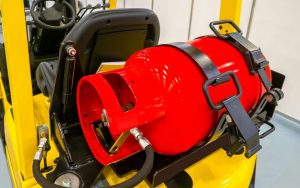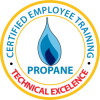Less CO2 emissions with propane equipment
The benefits of propane as a clean fuel are extremely important to consider when we are looking at ways to reduce emissions in businesses, schools, and institutions. Emission standards are becoming more strict and propane will allow for regulations to be met without forfeiting performance.
Using propane can significantly reduce greenhouse gases (GHG), nitrogen oxide (NOx), sulfur oxide (SOx), and carbon monoxide (CO) emissions across a multitude of building and construction applications compared to other energy sources. Check out the new data in this downloadable PDF.
Propane will likely be the solution for builders, keen on using high-efficiency, sustainable equipment, who have clients with stringent sustainability benchmarks to achieve.

Lower Emissions
‘Green’ building is becoming an increasingly popular term in the world of architects and developers. Check out this page to learn more about how you can make your building ‘green’.
It refers to a proactive approach to minimizing all negative environmental impacts associated with construction and reducing the carbon footprint of the buildings themselves. It also promotes the potential of buildings to have positive impacts on our climate.
Propane is a low-emissions energy source that is incredibly versatile. As data suggests, propane outperforms other energy sources such as electricity, coal, oil, wood, gasoline, and diesel when it comes to reducing harmful emissions.
Propane’s low carbon output is consistent with design safety measures that the industry is taking to reduce emissions. Check out this page to learn more about commercial green building with propane.
Not only does propane help lower emissions and reduce the overall carbon footprint, it also helps ensure we are safe.
How Propane Keeps Us and Workers Safe
Propane plays an important role in reducing harmful emissions such as carbon monoxide (CO) from equipment often used by workers. This is one key reason why propane is safer to use than equipment fueled by gasoline or diesel. Let’s take a closer look at some of the other reasons that make propane the smarter and safer choice.
Clean Burning
Propane is recognized by the Environmental Protection Agency as a nontoxic and non-contaminant of air, water, and soil. It does not pose a threat to our drinking water, marine systems, ozone layer or production of crops.
Carbon Monoxide Detectors
Propane equipment models have built-in carbon monoxide detectors that automatically shut off the equipment before unsafe CO levels are reached. As an additional safety measure, protocols are in place for workers to exit the premises and contact their local authorities.
Properly Contained
When it comes to dangerous leaks and spills, propane remains the safest energy source. Propane tanks are 20 times more puncture resistant than gasoline and diesel tanks and propane-powered equipment have closed-loop systems that prevent spills.
Propane also offers a higher ignition temperature and a much narrower range of flammability than many other energy sources, not to mention the lowest flammability rating of any alternative fuel. This is important in reducing the likelihood that propane will ignite unintentionally.
This interesting article debunks myths about propane safety. Check it out!
Suppliers of propane are dedicated to their clients and provide safety training not only to their employees but to their customers, as well. They offer support in many ways including install, inspection, and replacement of propane systems and containers.
If you have questions or concerns about propane or propane safety, visit our website or contact your local Clean Gas representative. Give us a call on 233-4427 or email us at gopropane@cleangas.ky.






